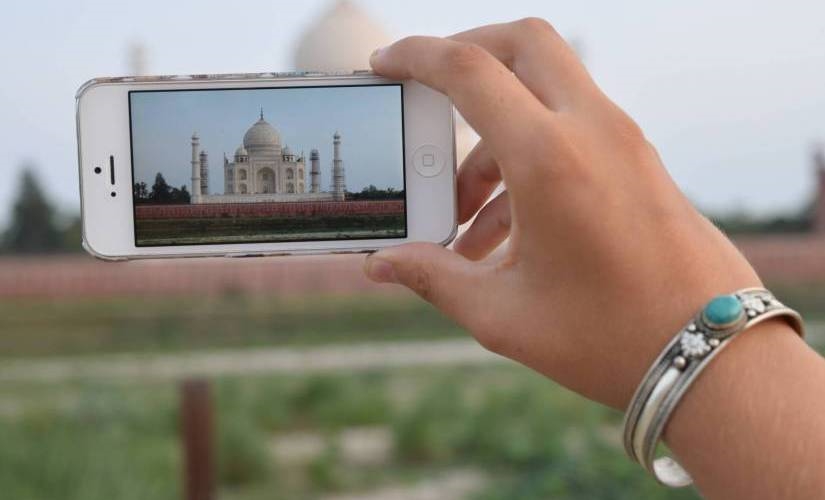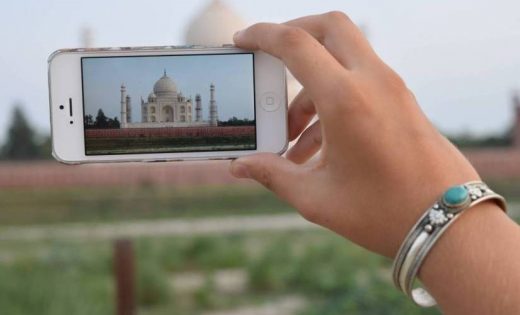Why Apple’s iPhone Struggles in India and Why it Matters
Why Apple’s iPhone Struggles in India and Why it Matters

Apple, the world’s most profitable company, has one of the most valuable products, the iPhone, which accounts for 60 percent of Apple’s yearly revenue. The iPhone and its entire ecosystem have experienced a lot of success in many countries across the globe with iPhone sales growing from a million dollars in 2007 to a staggering 231 million in 2015.
iPhone Sales
In the last couple of years, iPhone sales have been flat, and they haven’t been much of an exception, general smartphone sales have been on the decline due to smartphone saturation; where the average person has a smartphone leaving manufacturers with no one to sell to.
Apple being a public company cannot thrive on plateauing iPhone sales as it has demands to meet, iPhone sales need to grow yearly to keep shareholders happy.
Apple could sell new iPhones either by providing users with their very first-ever smartphone, switching users over from competing brands or by getting current iPhone users to upgrade their smartphones.
The last strategy of making users upgrade hasn’t been successful in recent times, because the quality of iPhones have improved over time that they tend to last longer, making users more reluctant to upgrade.
The other two methods Apple can use to curb slowing smartphone sales; acquiring new smartphone users, or switching users over from competing brands have been more successful.
The number of people on the planet is limited, so Apple has to look for new customers in developing countries with growing economies and citizens in need of smartphones; countries like India, which as been a major concern for Apple in recent years.
The iPhone in India
India, home to 1.3 billion people, is on track to beat China and become the most populous country on the planet by the year 2024.
India’s economy is one bubbling with potential, her GDP is among the fastest-growing in the world and about 44 Indians get out of extreme poverty every minute.
The trajectory of people coming out of poverty has got American companies like Google, Uber, Microsoft, Apple, and Amazon excited. India can now provide these companies with 1.3 billion potential customers; many of which are using the internet and computers for the first time.
Apple expansion
Apple has been fairly successful in its plans to expand to emerging markets like China, but even with India being one of the few regions which isn’t experiencing smartphone saturation, Apple hasn’t been doing so well.
In 2018, Apple lost 3 key Indian executives, failed to meet its annual revenue target in the region, and was hit by India’s high smartphone tariffs, it is clear that Apple has been struggling in the region and for some reasons.
The iPhone’s high price
In 2016, Apple’s brand new iPhone 7 started at $ 650, about a year later, the iPhone X’s starting price was $ 1000, a $ 350 price increase from the last year’s model.
Apple’s 2020 ‘budget’ smartphone, the iPhone 11 costs $ 50 more than the 2016 flagship iPhone 7.
Due to the drastic surge in the price of the iPhone, Apple has recorded an increase in profit, making up for slowing unit sales, but in India; a price-sensitive country, this strategy is backfiring.
75% of all smartphones sold in the region cost less than $ 250 and 95% cost less than 500, (according to intoindia blog dot com), thus putting Apple’s flagship phones in the ultra-premium, which Apple normally operates in. The premium smartphone market in the region is less than 5% of the total smartphone market, which just isn’t enough for Apple, as Oneplus was the best selling premium smartphone in India, in 2019.
Most smartphones that are sold in India are sold for about $ 200. Other popular smartphone brands have adapted, with Samsung launching its budget series Samsung Galaxy A and M series, and Xiaomi its Redmii series, both starting at as low as $ 150.
Because of this, Samsung, Vivo, and Xiaomi accounted for the majority of Indian smartphone sales garnering 16%, 17%, and 30% respectively, with Apple only owning about 2%.
Combining the high price of the iPhone with a GDP per capita of $ 2,171, its easy to see why Indians aren’t willing to pay so much for a phone that costs above a thousand dollars.
High import tariffs
Apple has a specific disadvantage in the Indian market because of the local regulations. There is a very high import duty on phones that are not manufactured locally in India. Because of tariffs and duty, most smartphone producers tend to produce their smartphones locally so they don’t have to pay that high import duty.
The Indian government puts a 20% tariff on smartphones manufactured in other parts of the world, this is to incentivize more foreign companies to manufacture domestically, help employ their large population, and boost their economy. Due to Indian tariffs, the $ 1000 iPhone X started at about $ 1400 and the $ 700 iPhone 11 at $ 852 in India.
Tim Cook’s visit to India
Despite Tim Cook’s visit to India seeking tariff reductions and promising to manufacture at some point in the future if allowed to sell in India, the Indian government not only refused the offer but also made it more difficult for Apple to sell in India.
Smartphone manufacturers like Xiaomi, Vivo, Oppo, and Samsung have either opened or invested in smartphone manufacturing plants in India to produce low-cost smartphones specifically tailored to the Indian market.
Apple is yet to do the same, as it only manufactures its lower-cost iPhone 6s and SE (2016).
The iPhones subpar software experience
The iPhone software experience still isn’t as good in India as it is in places like the US. The user software lacks a robust software experience, services like Apple Pay haven’t been launched in India. The user experience is still subpar, though Samsung Pay and Google Pay have been operating in the region for a while now.
Apple Maps has been lacking for the most part and just introduced turn by turn navigation in 2019. Siri has always had problems in the west, but it is worse in India. In India, maps has an extremely hard time understanding Indian accents. Well, boo-hoo — figure it out — or have Siri and Alexa figure it out for you?!
Why can Apple not see the potential of programming and updating software to bring satisfaction to billions of users in other countries? This point brings up an essential question. Why would Indian users pay higher for a product that lacks basic features that many of its competitors offer at a much lower price?
Lack of an official retail store
Also, there are no Apple stores in India, retail or online. Only authorized resellers are in India — that means it is impossible to buy directly if you live in India, and Indians who wish to purchase an Apple device are directed to a “where to buy” page on the Indian website. (Double-pay-middleman).
Apple simply can’t start building their retail store in India to sell the iPhone because they are limited by government restrictions that require foreign retailers to buy at least 30% of their materials from Indian vendors. Since Apple buys many of its components from other places in Asia — it doesn’t meet the requirements to open retail stores in India.
In India, most smartphones are sold in small roadside shops where the vendors don’t know the many advantages the iPhone has over its competitors. Roadside shops can’t educate customers looking for a new smartphone on the advantages the iPhone has over its competitors.
How Apple can fix the very real issues
Apple has always prioritized profit over market share, owning the largest slice of the market share has never been its goal. In India, where its market share is only two percent, Apple should be alarmed as it is losing out on millions, if not billions, of potential customers.
Acquiring brand new smartphone users is essential for Apple’s growth as existing users are more valuable in more ways than one. Customers purchase accessories like the Airpods, Apple Watch, and soon Apple AR glasses that boost all services. Any Apple product seeks to grow users by having them subscribe to Apple Music, iCloud, and Apple TV.
In order for Apple to increase the number of Indian users, it has to adapt to the region, it needs to open its stores, where it can educate customers on the features of the iPhone and advantages it has over other competitors.
To further boost sales, Apple can only get approval for its official retail stores by establishing a large manufacturing presence and sourcing as much of its hardware components from the region.
Apple also has to create a true budget smartphone tailored for the Indian market, that would be manufactured in India and sold only to developing countries with lower price points.
Apple recently tried this strategy with the $ 400 2020 iPhone SE, which is priced at 42,500 Rupees or about $ 560 in the region. However, this price is still higher than the majority of smartphones sold in the region — and Apple needs to build its brand in the region.
There are more issues than an iPhone
Apart from hardware, there are other things Apple needs to consider. The Apple software is mostly lacking in India so Apple will need to improve other services in the region, such as its Maps services, Virtual Assistant; Siri, launch, and Apple Pay. The Indian market is well versed in the software aspect, so Apple may want to include software designed specifically for the Indian market.
Conclusion
In order for Apple to expand into the Indian market, it needs to change its strategy and tailor it for the Indian market. Apple will want to produce locally manufactured devices sold at an affordable price tag — with improved features.
Until they do so, their competitors will continue to make more useful and appealing devices, with features and a cheaper price point.
The post Why Apple’s iPhone Struggles in India and Why it Matters appeared first on ReadWrite.
(39)


